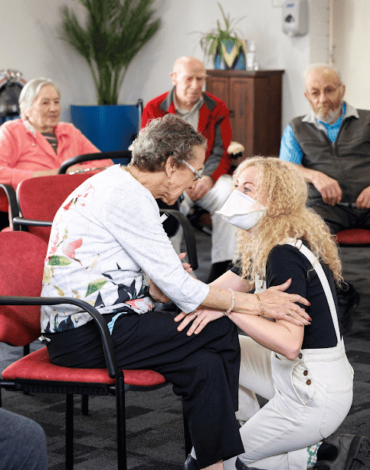
Allied Health Insights Vol.3 No.12: Spotlight On Creative Arts Therapies
This week, we look at the therapeutic applications of creative arts therapies, with a focus on the drama therapy profession.
Creative arts therapy—or expressive therapy or simply creative therapy—is multidisciplinary, housing a number of nascent professions including art therapy, dance and movement therapy, music therapy, and drama therapy. These small workforces face several challenges that impact their sustainability, including high costs of maintaining self-regulation and professional accreditation.
While creative therapies are known to help people to find their voice and cope with ongoing anxiety issues, their therapeutic applications can be quite broad, spanning the use of expressive arts as an outlet for people living with chronic pain, using drama therapy in prisons to address mental health inequities, incorporating creative arts into rehabilitation outside of a hospital setting, using drama therapy and puppet theatre to help people with dementia to socialise, and movement therapy to address emotional imbalance.
Drama therapy (or dramatherapy) is barely 50 years young and still evolving, and as this week’s lead story demonstrates, incorporate niche modalities. Dannielle Jackson is a Tasmania-based drama therapist who uses puppetry in her work to assist people living with dementia. We spoke to Dannielle about this specific focus as a drama therapist.
HealthWork International actively supports allied health professions, including small or niche professions, with surveying and geospatial mapping of the profession, secretariat and association management, and policy and regulatory consultancies. Packages are also available to develop dedicated online community and learning spaces for associations. Contact us to find out more.
The question of ‘how best to be regulated’ is one that continually arises, with audiologists and exercise and sports science practitioners expressing a desire in recent years to be regulated at the national level through the National Registration and Accreditation Scheme, under Ahpra and the national boards.
It’s an opportune time to drill down on how different types of regulation work, and who better to ask than HealthWork International Senior Policy Advisor Dr Anne-Louise Carlton.
Anne-Louise played a pivotal role in establishing the National Registration and Accreditation Scheme, under which the Australian Health Practitioner Regulation Agency (Ahpra) and the 15 National Boards that govern different health professions operate. Recently, Anne-Louise was part of a multi-national research team that carried out an extensive review of the global literature on health practitioner regulation, commissioned by the World Health Organization (WHO).
We cover a lot of ground in this chat: are there “unregulated” professions?; is registration under the National Registration and Accreditation Scheme a silver bullet?; just how difficult is it to put together a code of conduct for a specific profession? We talk about the pros and cons of self-regulation, current innovations, and what the future holds.







